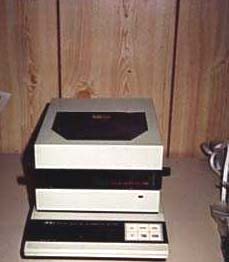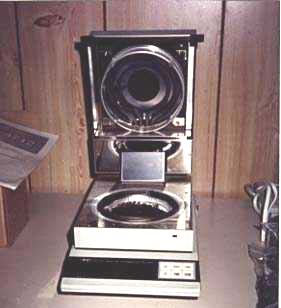 |
||||||||||
 |
||||||||||
|
The first method uses an electronic weigher/oven. A small sample of wild rice is first ground up into a powder. (This speeds up the rate at which the water is driven off.) Then we open the instrument and place the powder on the circular metal dish. [top right] The weight of this sample is displayed in the digital window at the front of the instrument (beside its white buttons). The instrument remembers this initial weight. Can you see the heating coils in the lid? When we put the lid down and push the "on" button, the oven heats up. Almost all the water in the sample evaporates in about 7 minutes. Then we turn the oven off and a second weight is taken. The instrument is programmed to calculate the difference in the weights (before and after heating) and to calculate how much weight was lost due to the loss of water. The instrument displays the result as a % weight of water in the original sample. We record this observation. The observation is reliable to within 0.2%. Thus, an instrument reading of 8.5% means that we're confident that the percentage of water in the sample is between 8.3% and 8.7%. From start to finish, it takes about 10 minutes to find out the water content of some wild rice. |
||||||||||
|
|
||||||||||
|
Click on a page number to move within the site. |
||||||||||